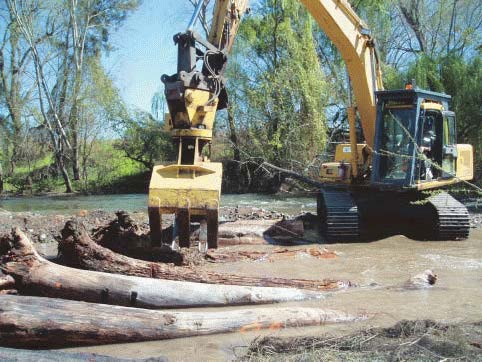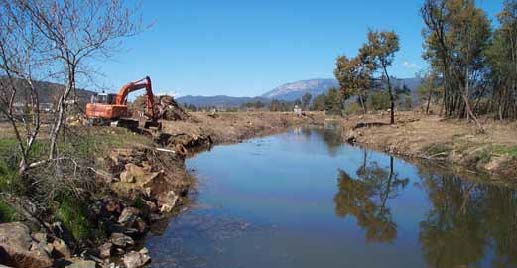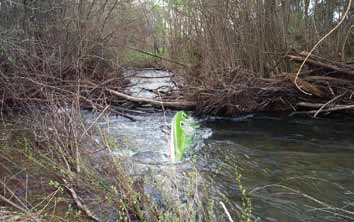Large wood (snags) and native vegetation (instream, bank and riparian) play an important role in influencing the health of rivers, estuaries and wetlands.
Taking wood or removing trees, shrubs and reeds from the bed and banks of waterways and from riparian land typically leads to poorer water quality, eroded riverbanks and degraded environments.
In many parts of Victoria, catchment management authorities (CMAs) and Melbourne Water are working in partnership with local communities and landholders to put wood and vegetation back into our waterways and riparian areas.

Large wood being anchored into a waterway. Photograph: North East CMA

Willow removal on the Happy Valley Creek, Myrtleford. Photograph: North East CMA
The potential for flooding due to instream wood and vegetation in and around waterways is a concern for landowners. In response, DEECA has developed factsheets for the community covering:
- vegetation management
- approvals you may need in managing vegetation.
Factsheets
Managing vegetation and large wood in and around waterways: overview and approvals required (PDF, 318.7 KB) or Accessible version (DOCX, 94.1 KB)
Large wood (snags) and flooding (PDF, 441.9 KB) or Accessible version (DOCX, 91.6 KB)
Instream vegetation and flooding (PDF, 352 KB) or Accessible version (DOCX, 92.7 KB)
Riparian (streamside) vegetation and flooding (PDF, 269.9 KB) or Accessible version (DOCX, 91.6 KB)

Exotic vegetation, like willows, can have a significant impact on the condition of riparian land and also recreational use of waterways and riparian land. Willows choking the Ovens River near Bright. Photograph: North East CMA